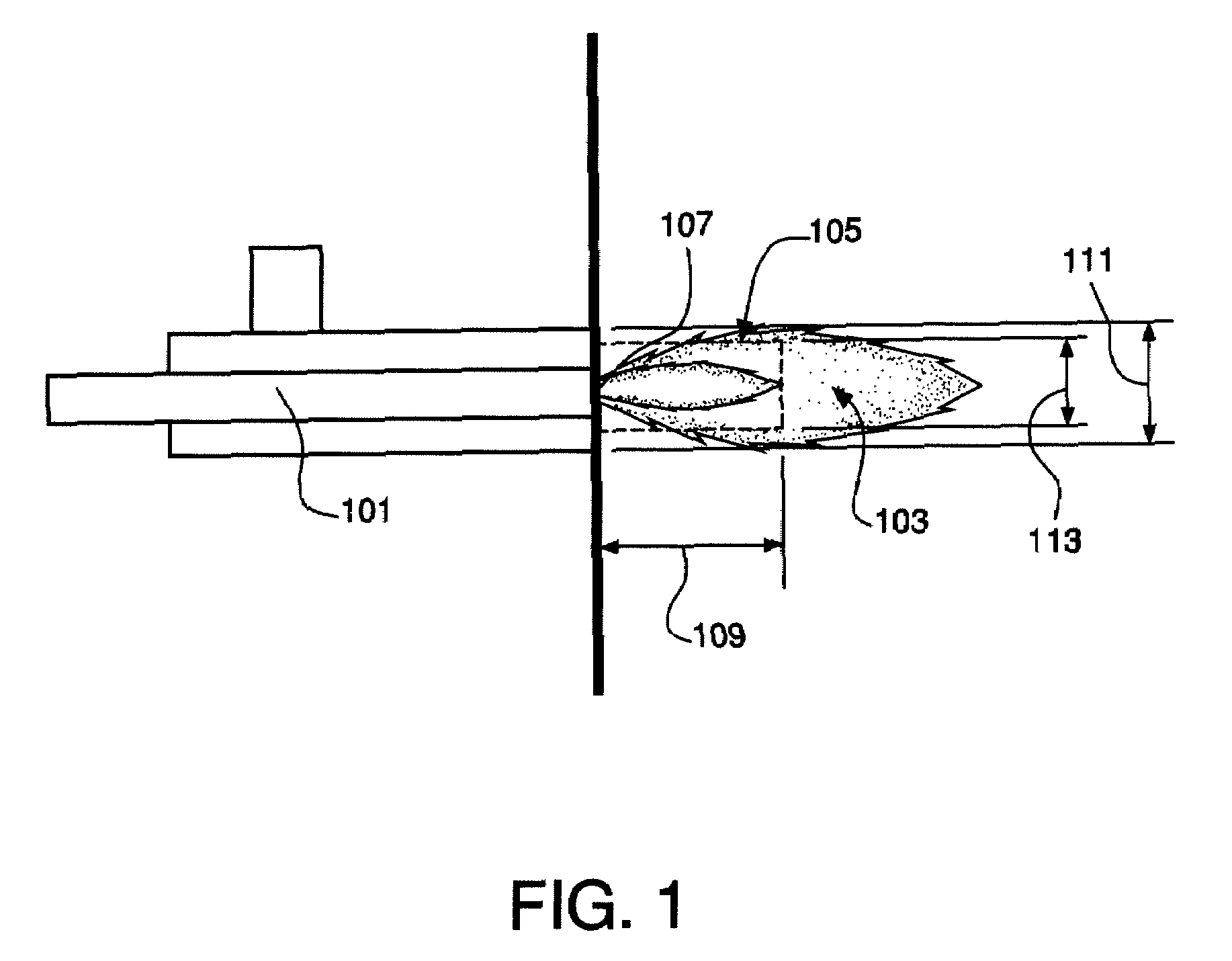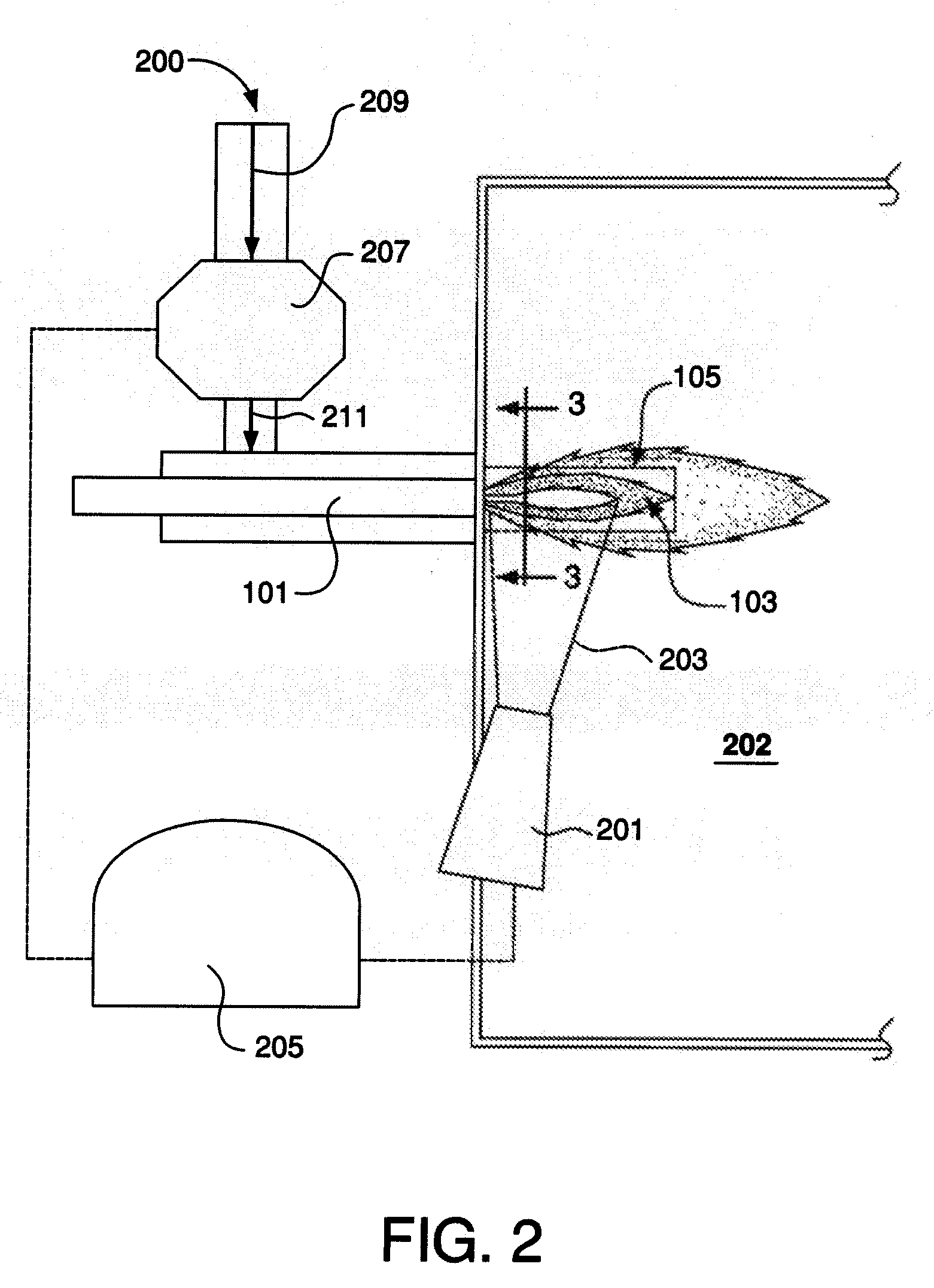Oxygen control system for oxygen enhanced combustion of solid fuels
a control system and solid fuel technology, applied in the field of combustion systems, can solve the problems of reducing the efficiency of combustion, and requiring expensive support fuel to maintain combustion stability, so as to reduce the risk of flame blowing off, reduce the risk of nox emission, and reduce the process cost
- Summary
- Abstract
- Description
- Claims
- Application Information
AI Technical Summary
Benefits of technology
Problems solved by technology
Method used
Image
Examples
example
[0050]A wall-fired solid fuel combustion system was operated with two industrial-design swirl-type burners burning pulverized petroleum coke with air and oxygen, and a flame temperature was monitored for one of the burners using an infrared pyrometer. The pyrometer was a thermo-imaging Mikron M9104 pyrometer available from Mikron Infrared, Inc. Oakland, N.J. The measurements were taken during two different modes of oxygen enrichment. In a first mode, oxygen was injected directly into the NBZ. In the second mode, oxygen was distributed uniformly over the entire flame length. The solid petroleum coke fuel properties were as follows:
Higher Heating Value: 14,000 Btu / lb
Fixed Carbon Content: 80 wt %
Volatile Content: 10 wt %
[0051]Particle Size: 80 wt % passing through US 200 mesh screen
[0052]The flame 103 length was nominally 10 times the burner outlet nozzle diameter. Flame temperature data for the operational modes were recorded. The normalized sensitivity of flame temperature to oxygen ...
PUM
 Login to View More
Login to View More Abstract
Description
Claims
Application Information
 Login to View More
Login to View More - R&D
- Intellectual Property
- Life Sciences
- Materials
- Tech Scout
- Unparalleled Data Quality
- Higher Quality Content
- 60% Fewer Hallucinations
Browse by: Latest US Patents, China's latest patents, Technical Efficacy Thesaurus, Application Domain, Technology Topic, Popular Technical Reports.
© 2025 PatSnap. All rights reserved.Legal|Privacy policy|Modern Slavery Act Transparency Statement|Sitemap|About US| Contact US: help@patsnap.com



